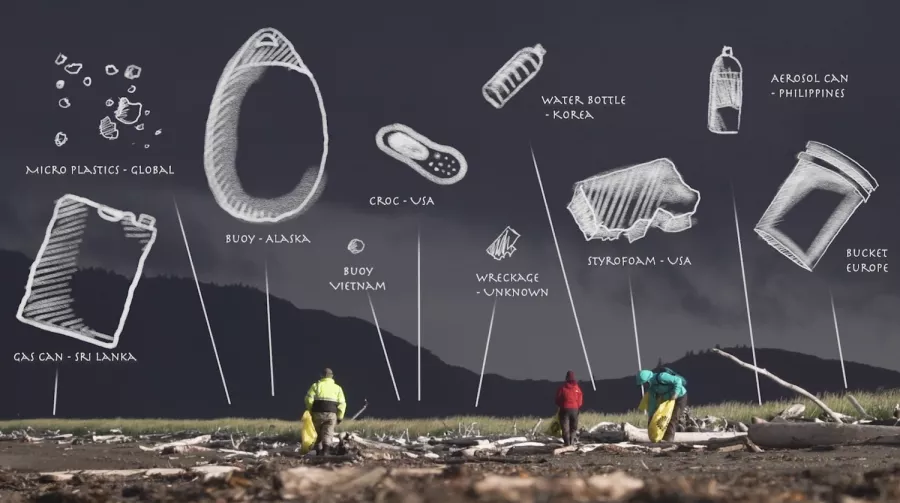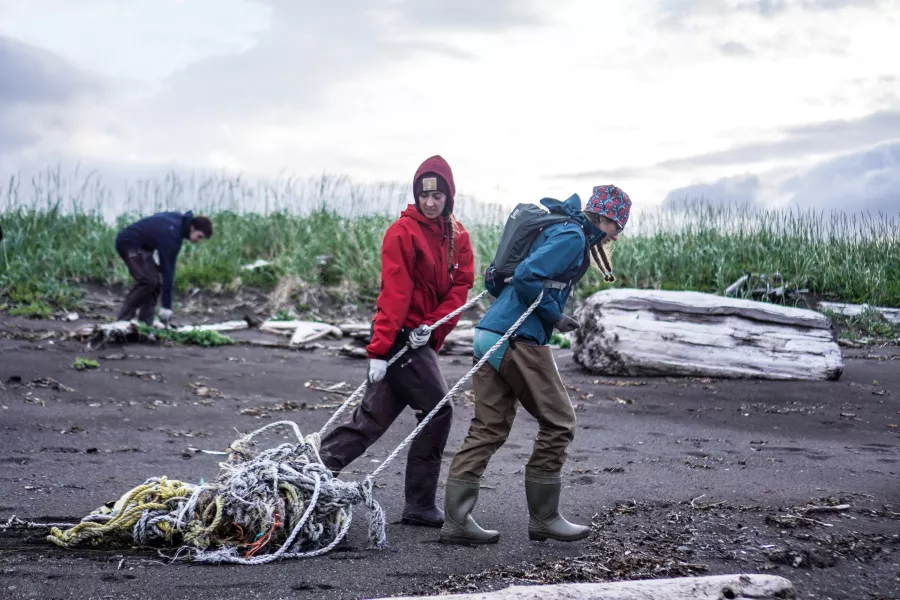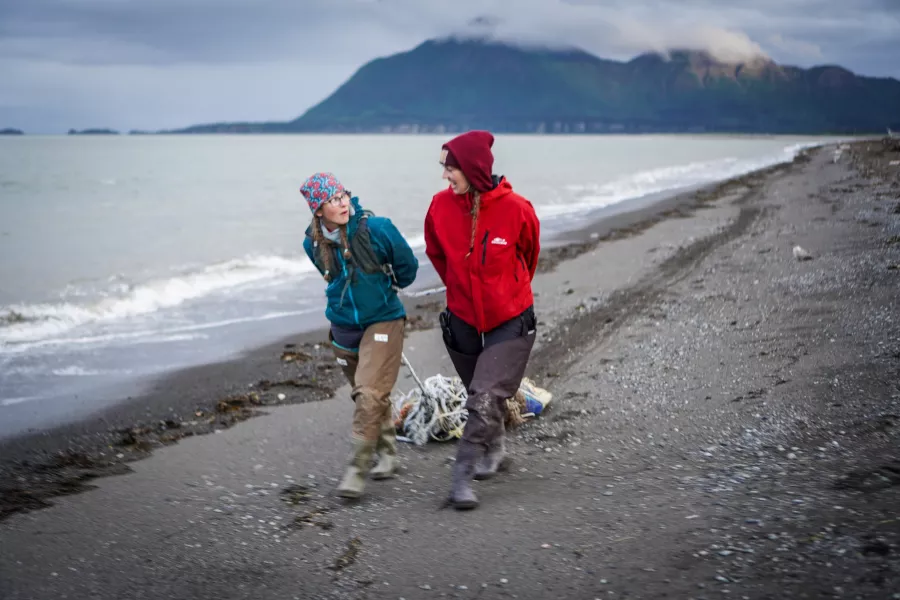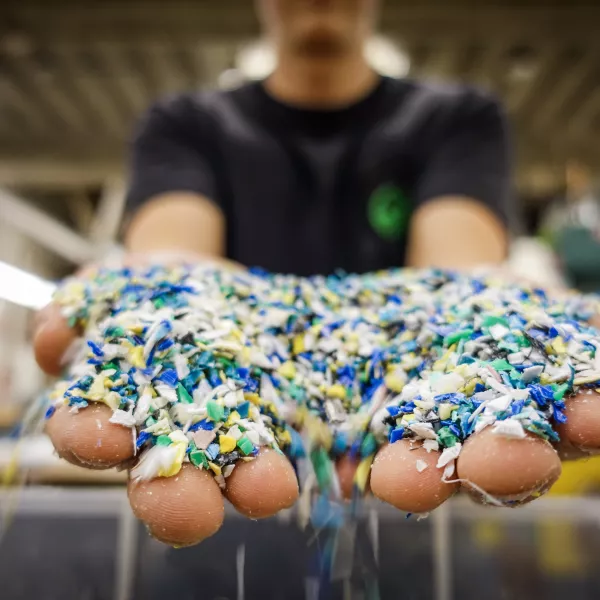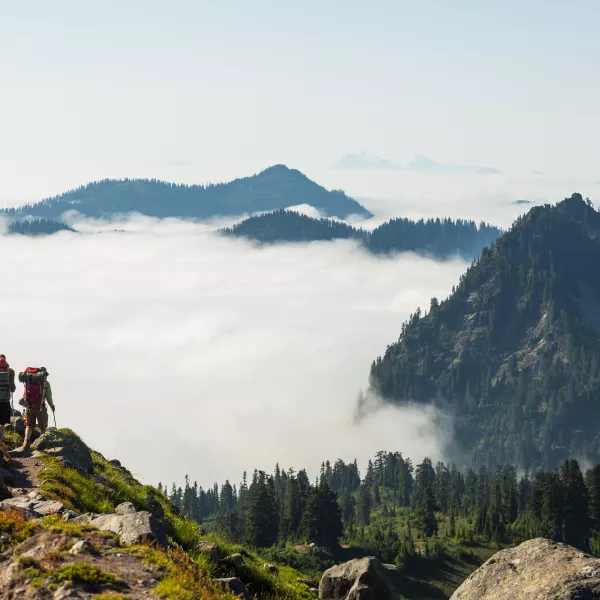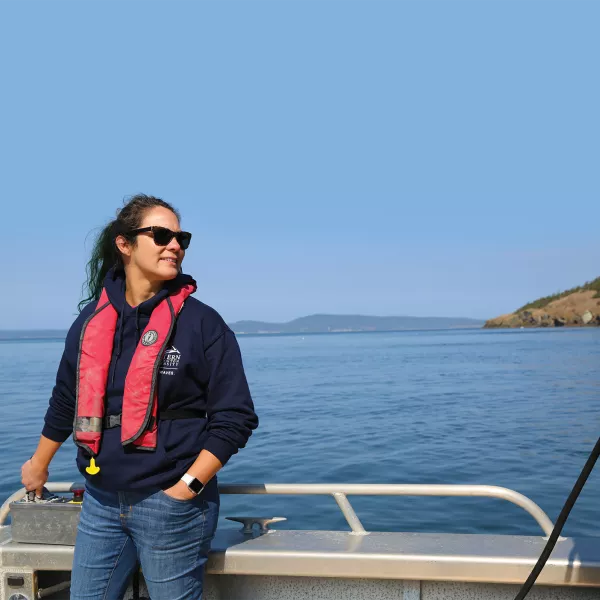Fishing nets and lines. Buoys. Milk jugs. Soda bottles. Flip flops. If it is plastic and it floats, the ocean currents will carry it—often for years—before a storm deposits it behind a beach, joining untold millions of pounds of its kin worldwide.
“The narrative for decades was that this stuff was all just trash—that it had no use or potential beyond simply being garbage that no one really wanted to deal with,” says John Misasi, ’11, B.S., and associate professor of Polymer Materials Engineering. “But our team is part of the effort to change that narrative. And of course, our first goal is still to stop this plastic from entering the ocean to begin with, and we’re working on that through research and outreach in recycling.”
Misasi and a dedicated crew of his students at Western are part of a growing chorus that is working to prove that ocean plastics aren’t just landfill material, and a new public/private partnership between Western and Alaska’s Ocean Plastics Recovery Project is focused on not only removing the plastic from remote Alaskan beaches, but keeping them out of the state’s landfills as well. “The point isn’t to move the plastic from one place just to put it in the ground at another,” Misasi says. “This is all about the circular economy—of using and re-using the same product, not just making it once and then burying it.”
The Polymer Materials Engineering program just launched an option for majors to add a concentration in circularity to embed this concept into their coursework.
Ocean plastics are a threat to marine life—and humans—in a variety of ways. Plastic takes so long to break down in the ocean, it can remain a threat for decades. Birds, mammals, turtles, and other sea life often eat little pieces of plastic, which block their digestive tracts and eventually kills them. Smaller plastics break down even more into micro- and nanoplastics, where they are consumed by the tiniest members of the food chain, which are then consumed by larger members, and so on, until the apex predators—from whales to humans—are themselves eating more and more plastic without even knowing it.
Discarded fishing nets also litter the world’s beaches by the ton. These “ghost nets” continue to catch and kill fish long after they’re discarded by humans. By the time they’re found washed up on the beach, they’ve already done untold damage for years.
Over the past four summers, groups of Western students collected ocean plastics from beaches in remote Alaska; the last two summers were focused on islands and beaches in remote Katmai National Park. Working alongside their private-sector partners from Ocean Plastics Recovery, last summer the students pulled 50,000 pounds of plastic waste from Katmai’s beaches, and, to date, not a single pound of that ocean plastic has made its way into a landfill.
So what happens to all that plastic once it is pulled from Katmai’s shores? Just more work for the students back at Western.
From the ocean to the lab
In Misasi’s lab in Bellingham, samples from beaches across Alaska are tested and re-tested, broken down into their component parts and then put together and combined into new compounds.
“Most ocean plastics that wash up on the shores of places like Katmai have, in some way, degraded from their original chemical composition,” Misasi says. “But that doesn’t mean they don’t have value as recyclables. What we are trying to do is figure out how these ocean plastics, in their various degrees of degradation, can be broken down, mixed, and recombined into new compounds just as good—or better—than their original form.”
Western student Nick Gajkowski’s last two summers have been dominated by work on the project, and his passion for solving the ocean plastics crisis is evident when he talks about this work.
“I took a summer research position in Western’s PME lab looking at characterizing types of recycled plastic. We investigated determining recycled content in a specific sampling of plastic in the hopes that it could be used by industry,” Gajkowski says. “This would allow manufacturers to test material and confirm whether they were getting the recycled material they ordered. In the lab I received important hands-on experience with the industry’s instrumentation and machines, which showed me how difficult of a task recycling really is.”
Misasi says this passion to tackle big problems often shows up in students’ application essays to declare their majors.
“Using their engineering degree to tackle some of the biggest issues facing society today is becoming a more common theme in our students, and the plastics-waste crisis is certainly one that has their attention,” he says. The work of Misasi, Gajkowski, and the other Western students has paid off. A big chunk of the 50,000 pounds of plastic collected from Katmai with OPR will be going to tech giant HP, which has an aggressive set of goals for getting more recycled content into their products.
“Building these pathways—from the beaches back to the companies for re-use—is what our work is all about,” Misasi says. “We just need to keep showing that all of it, from the plastics to the work involved in getting it off the beaches and ready for re-use—has value.”
Making their voices heard
In early March, Misasi and WWU students Jayme Perman and Taylor Hollcraft, along with Scott Farling from OPR, gave the closing presentation of the national Plastics Recycling Conference in Washington, D.C., about the Katmai project.
“We had some very specific goals around that conference, not the least of which was acquainting the industry with Western as a potential partner, and our students as potential employees,” Misasi says.
“But more than that, we also wanted to show the industry how the education of the next generation of plastics engineers will impact that same generation of workers in the industry. They aren’t just coming out of our program looking for a good job; they want to solve the world’s problems, and want to work for companies that feel the same way they do,” he says.
